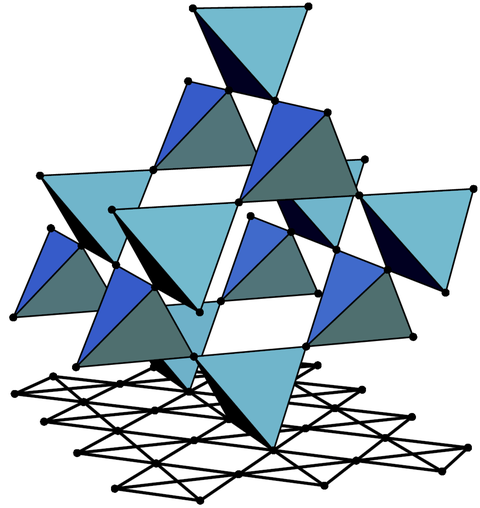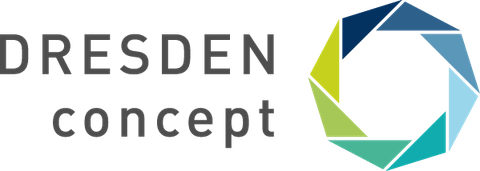Current Research Projects
We are active in 2 major coordinated research projects at the TU Dresden:
- Collaborative research center "Correlated Magnetism: From Frustration to Topology
(CRC 1143) - Cluster of Excellence "Complexity and Topology in Quantum Materials"
(ct.qmat)
Together with the IFW Dresden we also run the new DRESDEN concept laboratory for "Advanced Imaging and Scattering Studies" (AIMS).
Collaborative research center
Correlated Magnetism: From Frustration to Topology
(SFB 1143)
SFB 1143 is a joint project of TU Dresden and several DRESDEN concept partners. It comprises 3 project areas - A: Theory, B: Materials, C: Electronic Properties - hosting 19 scientific projects with 31 principal investigators. The full team consists of approximately 70 scientists. Our role within this research center is defined by two of its projects:
X-ray spectroscopy: Electronic degrees of freedom and their excitations (C06)
PIs: Jochen Geck, Liu-Hao Tjeng
For a thorough understanding of frustrated magnetic materials and in the search for materials realizing novel magnetic states of matter, it is essential to determine the active charge, spin, and orbital degrees of freedom and their various interactions. This is the objective of this project. We employ cutting- edge x-ray spectroscopy experiments at synchrotron light sources, such as X-ray absorption (XES) and x-ray magnetic circular dichroism (XMVD), high-resolution x- ray photoelectron spectroscopy (PES), resonant inelastic x-ray scattering (RIXS)and esonant elastic x-ray scattering (REXS). Major goals are the study of how local and non-local interactions determine the magnetism of frustrated Ir, Os and Ru compounds, including their pyrochlore and honeycomb variants. In addition, we will also investigate novel triangular quantum magnets provided by our partners. Special attention will be paid to the intricate interplay between crystal field effects, spin-orbit coupling, and covalency. The corresponding experiments will be performed as a function of temperature, applied magnetic field and hydrostatic pressure.
Strain tuning of frustrated magnets (C09)
PIs: Clifford Hicks, Andrew Mackenzie, Jochen Geck
Frustrated magnetic materials exhibit a variety of unconventional magnetic ground states, which emerge from a delicate balance between different magnetic couplings. This balance typically depends critically on the lattice geometry of the material, meaning that the magnetic ground state of frustrated systems is usually very sensitive to applied lattice deformation. Indeed, the response of a frustrated magnet to a lattice change can serve as a fingerprint of the magnetic interactions at play. In this project, we use uniaxial stress as tool for studying frustrated magnets. We use externally applied uniaxial stress to alter the lattice symmetry of spin-liquid and spin-ice-related compounds in a controlled way. To study the resulting response of these systems, a new methodology will be established and applied, namely high-resolution X-ray structural studies and quantitatively accurate heat capacity measurements under uniaxial stress. The former will enable determination of the induced structural changes and the latter will allow determination of how lattice deformation affects the entropy in the system.
Cluster of Excellence:
Complexity and Topology in Quantum Materials
(ct.qmat)
Materials with tailored functionalities are the basis for progress in virtually all areas of modern technology. This joint cluster of the JMU Würzburg and the TU Dresden places emphasis on quantum mechanisms on the atomic scale, which, in conjunction with topological physics and the chemical and physical complexities, reveals hitherto unprecedented properties and phenomena. A revolutionary discovery in the 21st century was that topology is essential to understanding quantum-mechanical states of matter, which sparked a scientific boom across the globe. This led to the discovery of an abundance of new topological materials and phenomena. Key contributions came from Würzburg (observation of quantum spin Hall effect) and Dresden (prediction of magnetic monopoles in spin ice). Since then, Dresden and Würzburg have become leading locations for the exploration of topological materials in Germany, with each university boasting one DFG-funded Collaborative Research Centre.
Together with our ct.qmat-partners, we explore unconventional forms of topological magnetism. To this end, we will apply modern x-ray scattering and spectroscopy experiments, which we perform in our laboratories in Dresden, at synchrotrons and FEL facilities.
DRESDEN concept laboratory for
Advanced Imaging and Scattering Studies
(AIMS)
Partners: TU Dresden, IFW Dresden
The ability to determine the structure of condensed matter down to atomic length scales is key to understand, tune and control the physical properties of novel materials. Their fundamental physical properties such as band structure, magnetic ordering and transport all depend crucially on the atomic structure and may be probed employing radiation with wavelengths in the sub-Angstrom regime. For this reason, the availability of advanced diffraction and imaging methods using radiation of short wavelength such as x-rays, fast electrons, or neutrons, is an essential part for modern solid state and materials research. Access to this research methodology is in fact especially important today, because the ongoing technological miniaturization of devices requires the manipulation and control of materials on the atomic level.
This is exactly the motivation to establish AIMS as a new research facility in Dresden: Not only do we want to provide cutting-edge scattering and imaging methods. We also plan to develop new innovative approaches to extend the capabilities of these methods. More specifically, AIMS will focus on scattering and imaging by means of x-rays and electrons. An important goal of the planned developments is the ability to perform these experiments as a function of various external stimuli, such as temperature, pressure, strain, magnetic and electric fields or optical pulses. Such measurements are essential to uncover novel states of matter and to determine the physics at work in bulk and 2D materials, at interfaces, in nanostructures as well as in prototype devices.



